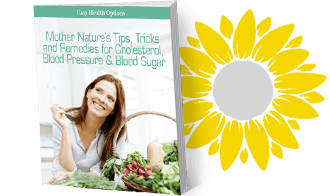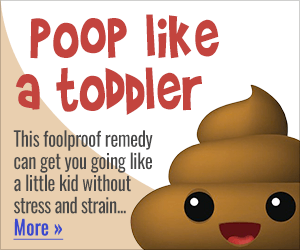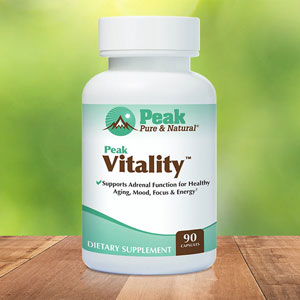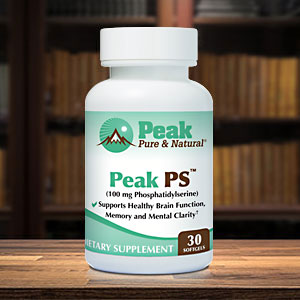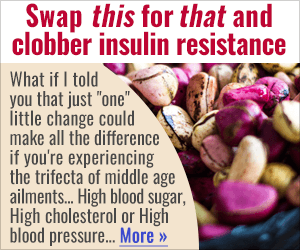Get Easy Health Digest™ in your inbox and don’t miss a thing when you subscribe today. Plus, get the free bonus report, Mother Nature’s Tips, Tricks and Remedies for Cholesterol, Blood Pressure & Blood Sugar as my way of saying welcome to the community!
How your diet can cause your bladder to leak

Do you ever feel like we women got the short end of the stick?
We spend half our lives dealing with the pain and hassle of a menstrual cycle, and just when that comes to an end — the celebration is cut short thanks to a whole new set of “gotchas.”
One of the worst, and sometimes most embarrassing, is bladder trouble.
You cough, sneeze, laugh or simply try to do something good for your body, like exercise, and your bladder betrays you faster than you can say “depends.”
Or you might be fine one second, but the next you have a sudden, intense urge to ‘go’ — followed by panic because a bathroom is nowhere in sight.
As many as 72% of us between the ages of 40 and 65 have these experiences — thanks to pelvic floor changes, overactive bladders or weak muscle control. We chalk it up to childbirth, aging and going through menopause.
But now, researchers in Finland say they’ve found one of the most surprising contributors to these problems — one that you could turn around with a few simple diet changes…
The diet that leads to pelvic floor disorders
In researching the health and diet data of over 1,000 women between the ages of 47 and 55, the Finnish scientist found that pelvic floor disorders and poor nutrition go hand-in-hand.
As expected, they saw that rates of pelvic floor disorders increased as women reached menopause due to estrogen deprivation.
However, they found strong evidence that nutrition could have a significant effect on the mechanisms of pelvic floor disorders that lead to bladder leaks.
For example, higher consumption of highly processed ready-made foods and fast food increased the risk for experiencing stress incontinence (like when sneezing) and urge incontinence (that sudden urge to go NOW).
On the other hand, higher consumption of fruits and an overall higher-quality diet decreased the risk for stress incontinence.
Diet habits, like overeating and extreme dieting or alternating between the two behaviors, also seemed to exacerbate pelvic floor problems and carry a higher risk of bladder leaks.
Put simply, if you need help warding off or improving incontinence trouble in middle age, focus on eating a nutritious diet.
The recipe for a lock-tight bladder
Diet as a tool to improve bladder function isn’t as far-fetched as it may seem…
Native Americans, for example, knew certain foods should be part of their daily diet, not just for nutrition, but as traditional medicine. One such food was pumpkin seed, revered for supporting bladder, kidney and digestive health.
They contain potassium, magnesium and zinc, which help calm and relax bladder muscles, reducing that desperate urgency to urinate. But what does the science say?
A 12-week study found that pumpkin seed oil extract significantly reduced overactive bladder symptoms. Other studies have shown it helps support prostate health and relieves BPH symptoms, like frequent nighttime urination.
In ancient China, healers used soybeans medicinally to support the kidneys and ease the afflictions of aging, such as hormonal changes.
Nowadays, we know how valuable soy is at supporting balanced hormones — and understand the roles of estrogen and testosterone for sustaining the strength of bladder muscles and the pelvic floor.
Soy contains phytoestrogens, plant-based compounds that have similar chemical structures to the hormone estrogen, which can also be found in flaxseeds and whole grains.
In a Korean study reported by the American Pharmacists Association, 120 women aged 35-70 years used a combo of pumpkin seed extract and soy, and reported a statistically significant improvement in daily urination, urgency and incontinence frequency compared with baseline. They also experienced fewer nighttime trips to the bathroom.
So if you need extra help taming your bladder, try to avoid the ultra-processed foods and snacks. Reach for pumpkin seed, flaxseed (great in yogurt) and whole grains. Your bladder will thank you.
Editor’s note: Are you feeling unusually tired? You may think this is normal aging, but the problem could be your master hormone. When it’s not working, your risk of age-related diseases skyrockets. To reset what many call “the trigger for all disease” and live better, longer, click here to discover The Insulin Factor: How to Repair Your Body’s Master Controller and Conquer Chronic Disease!
Sources:
Disordered eating and certain foods linked to higher risk for urinary incontinence in middle-aged women – ScienceDaily
Prevalence Of Incontinence In Middle Age Women – National Association for Continence
